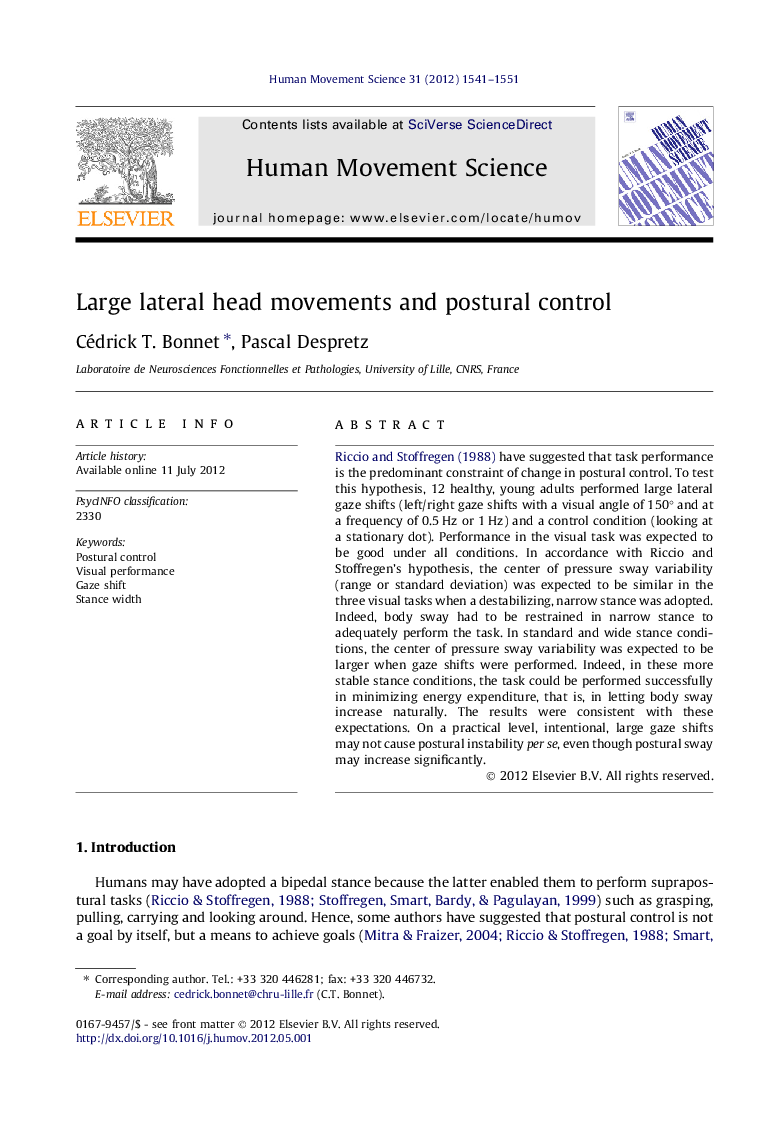| Article ID | Journal | Published Year | Pages | File Type |
|---|---|---|---|---|
| 928515 | Human Movement Science | 2012 | 11 Pages |
Riccio and Stoffregen (1988) have suggested that task performance is the predominant constraint of change in postural control. To test this hypothesis, 12 healthy, young adults performed large lateral gaze shifts (left/right gaze shifts with a visual angle of 150° and at a frequency of 0.5 Hz or 1 Hz) and a control condition (looking at a stationary dot). Performance in the visual task was expected to be good under all conditions. In accordance with Riccio and Stoffregen’s hypothesis, the center of pressure sway variability (range or standard deviation) was expected to be similar in the three visual tasks when a destabilizing, narrow stance was adopted. Indeed, body sway had to be restrained in narrow stance to adequately perform the task. In standard and wide stance conditions, the center of pressure sway variability was expected to be larger when gaze shifts were performed. Indeed, in these more stable stance conditions, the task could be performed successfully in minimizing energy expenditure, that is, in letting body sway increase naturally. The results were consistent with these expectations. On a practical level, intentional, large gaze shifts may not cause postural instability per se, even though postural sway may increase significantly.
